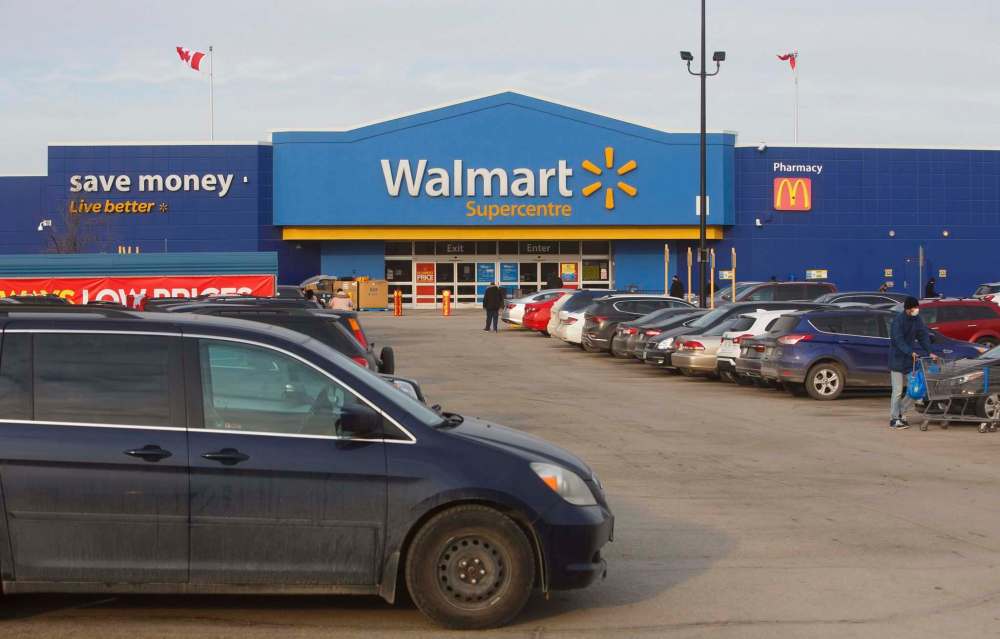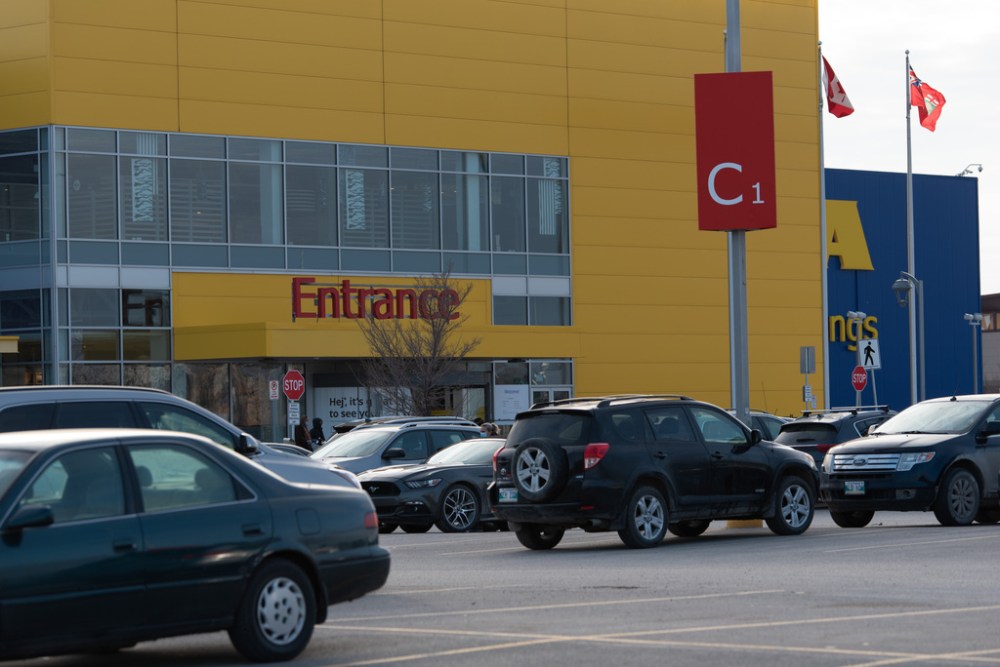Rule-breakers cashing in Retail restrictions not very effective if no one is enforcing them
Read this article for free:
or
Already have an account? Log in here »
To continue reading, please subscribe:
Monthly Digital Subscription
$0 for the first 4 weeks*
- Enjoy unlimited reading on winnipegfreepress.com
- Read the E-Edition, our digital replica newspaper
- Access News Break, our award-winning app
- Play interactive puzzles
*No charge for 4 weeks then price increases to the regular rate of $19.95 plus GST every four weeks. Offer available to new and qualified returning subscribers only. Cancel any time.
Monthly Digital Subscription
$4.99/week*
- Enjoy unlimited reading on winnipegfreepress.com
- Read the E-Edition, our digital replica newspaper
- Access News Break, our award-winning app
- Play interactive puzzles
*Billed as $19.95 plus GST every four weeks. Cancel any time.
To continue reading, please subscribe:
Add Free Press access to your Brandon Sun subscription for only an additional
$1 for the first 4 weeks*
*Your next subscription payment will increase by $1.00 and you will be charged $16.99 plus GST for four weeks. After four weeks, your payment will increase to $23.99 plus GST every four weeks.
Read unlimited articles for free today:
or
Already have an account? Log in here »
Hey there, time traveller!
This article was published 18/11/2020 (1874 days ago), so information in it may no longer be current.
Big-box stores jammed to the rafters. Non-essential businesses reopening by offering a small selection of essential items. Even as Winnipeg descends deeper and deeper into what is now the worst COVID-19 outbreak in Canada, business owners seem intent on taking as many liberties as they can get away with.
How did this chaos come to pass? Just as they had in the spring, public-health officials expected Winnipeg’s business community to organize itself into groups of essential and non-essential enterprises. This time, though, many owners started to realize there was a loophole in the language of the health orders.
Most non-essential businesses were identified by sector, which meant that gyms, hair salons, bars and dine-in restaurants were shuttered to visitors. Those considered essential, however, were largely defined by what they sold.

That has motivated some in the retail sector to offer a very small selection of essential items, enabling them to remain open. That is largely why stores such as Ikea, for example, are still open even though the gross majority of its products, while annoyingly fashionable, do not meet any definition of “essential.”
But that is not the only problem. By law, essential stores are limited to 25 per cent of normal capacity. Anyone who has made a trip to Costco or Superstore recently will see that no attempt is being made to count people entering or exiting. As a result, they are being jammed with pre-pandemic levels of customers.
With daily reports of triple-digit infections and double-digit deaths, you can tell that Dr. Brent Roussin, Manitoba’s chief public health officer, and Premier Brian Pallister are losing their patience.
Roussin said Wednesday that he is considering a range of new rules to ensure that “critical businesses are truly operating as critical businesses.” But, a careful examination of the most recent epidemiological research shows that the problem here in Manitoba may not be the rules, but rather the enforcement of those rules.
First, let’s talk about an inflection point between epidemiology and shopping.
Jurisdictions the world over have tried to keep a bare minimum number of stores open so people can shop for the basic necessities without undue risk. But trying to draw a line in the retail industry based on what stores sell will not make us safer, as a recent study from the U.S. shows.
Researchers at Stanford and Northwestern universities examined mobile phone data from March 1 to May 2 for nearly 100 million Americans in 10 of the largest metropolitan centres including New York, Chicago and San Francisco. The movements of those people were matched to models that predict the pattern and scope of infectious-disease spread.

So, what did we learn from all that data matching and modelling? First and most important, that 10 per cent of the locations visited by the mobile phones could be connected to 85 per cent of all infections. The locations of greatest risk included full-service restaurants, gyms and places of worship. Based on those findings, Manitoba’s code-red restrictions are on point.
However, the study also found that a range of other factors — including ethnicity and socio-economic circumstances, along with the physical size of the space and the number of times people made return visits — also determined the locations of greatest risk.
Researchers found, for example, that grocery stores in lower-income neighbourhoods resulted in a much higher rates of community transmission than grocery stores in more affluent, suburban locations. Why? People in more ethnically diverse, lower-income neighbourhoods got their groceries from smaller, more crowded stores. In fact, the study estimated that in poorer neighbourhoods, there were 59 per cent more people people per square foot than larger grocers in more affluent, mostly white neighbourhoods.
The study also found that poorer people visited these smaller stores more often (buying smaller quantities of food on each trip) and spent 17 per cent more time in total shopping.
What does all this tell us about the mayhem in Winnipeg? First and foremost, our concern should not be what a store is selling but how many people are allowed inside.
The Stanford-Northwestern study argued strongly that establishing an occupancy ceiling of 20 per cent of normal capacity would reduce visits by 42 per cent and cut community transmissions by more than 80 per cent.
The study does not, as some may argue, form an argument for a broad reopening of non-essential businesses. However, it is a call to action for the Pallister government to get serious about enforcing both the letter and the spirit of the rules governing the retail sector.

It makes no sense to stop Costco or Walmart from selling all of their normal products. If you limit what they can sell, shoppers will order non-essential items online. Is it unfair that bookstores were forced to close while big-box grocers are allowed to sell books? Yes, but anything that accelerates the growth of online retail poses a much greater existential threat to local businesses than Costco selling books during the pandemic.
We have a clear and immediate need to force all essential businesses to limit the number of people they admit. Public-health officials have complained for days now about crowded stores and parking lots, clear evidence that occupancy limits are being flouted.
The good news is that we do not need a whole new barrage of rules for retail businesses. We just need the Pallister government to strictly enforce the existing rules.
dan.lett@freepress.mb.ca

Dan Lett is a columnist for the Free Press, providing opinion and commentary on politics in Winnipeg and beyond. Born and raised in Toronto, Dan joined the Free Press in 1986. Read more about Dan.
Dan’s columns are built on facts and reactions, but offer his personal views through arguments and analysis. The Free Press’ editing team reviews Dan’s columns before they are posted online or published in print — part of the our tradition, since 1872, of producing reliable independent journalism. Read more about Free Press’s history and mandate, and learn how our newsroom operates.
Our newsroom depends on a growing audience of readers to power our journalism. If you are not a paid reader, please consider becoming a subscriber.
Our newsroom depends on its audience of readers to power our journalism. Thank you for your support.










